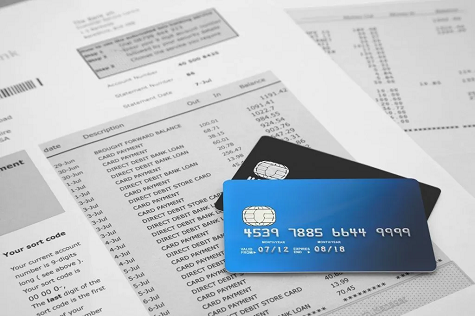Section 7-1 Account Statements
Section 7-1 Account Statements
Overview

 Account statements are official documents provided by financial institutions to their customers, detailing the transactions, balances, and other important information related to their accounts over a specific period. These statements serve as a record of account activity and provide valuable information for monitoring finances, reconciling transactions, and managing personal or business finances effectively. Here's an overview of account statements:
Account statements are official documents provided by financial institutions to their customers, detailing the transactions, balances, and other important information related to their accounts over a specific period. These statements serve as a record of account activity and provide valuable information for monitoring finances, reconciling transactions, and managing personal or business finances effectively. Here's an overview of account statements:
Contents of Account Statements:
- Transaction History: Account statements typically include a detailed list of transactions made within the statement period. This may include deposits, withdrawals, purchases, transfers, fees, interest earned or charged, and other account activity.
- Beginning and Ending Balances: Account statements usually display the beginning and ending balances for the statement period. The beginning balance reflects the balance carried over from the previous statement, while the ending balance shows the current balance at the end of the statement period.
- Account Information: Account statements may contain essential information about the account, such as the account number, account type, account holder's name, and contact information.
- Interest and Fees: Account statements may provide details on any interest earned on deposits or investments and any fees charged to the account, such as maintenance fees, overdraft fees, or transaction fees.
- Important Notices: Account statements may include important notices, disclosures, or updates from the financial institution, such as changes in terms and conditions, privacy policies, or regulatory information.
- Summary Information: Some account statements include summary information, such as total deposits, total withdrawals, net changes in the account balance, or average daily balance for the statement period.
Frequency of Account Statements:
- Account statements are typically issued on a regular basis, such as monthly, quarterly, or annually, depending on the type of account and the policies of the financial institution.
- Some accounts may also provide access to electronic statements (e-statements) that can be viewed online or downloaded through the financial institution's website or mobile app.
Importance of Account Statements:
- Account statements serve as a vital tool for monitoring account activity, tracking transactions, and detecting unauthorized or fraudulent activity.
- They provide transparency and accountability, allowing account holders to verify the accuracy of their balances and transactions and reconcile their records.
- Account statements also help account holders track their spending, manage their budgets, and make informed financial decisions based on their financial activity.
Reviewing Account Statements:
- Account holders should review their account statements regularly and carefully to ensure accuracy and identify any discrepancies or unauthorized transactions.
- If any errors or discrepancies are found, account holders should promptly contact their financial institution to report the issue and request correction.
Overall, account statements are essential documents that provide account holders with a comprehensive overview of their financial activity and help them manage their finances effectively. By reviewing their account statements regularly, account holders can stay informed, detect potential issues, and maintain control over their financial health.
Online Textbook Read Section 7-1 (Account Statements)
